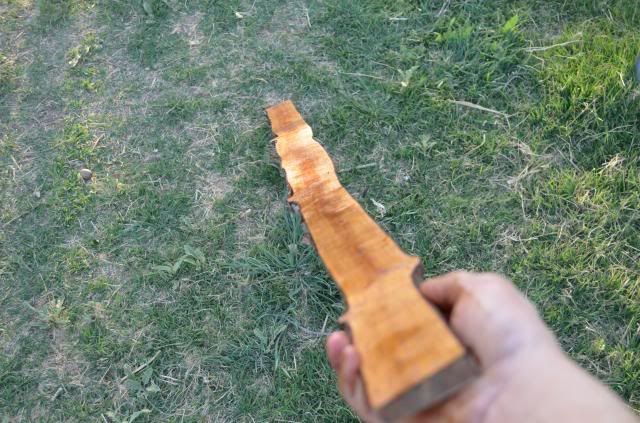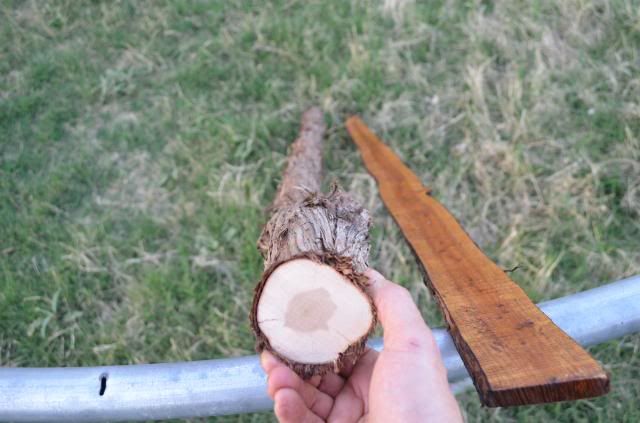Volume 2 of the Traditional Bowyer's Bible has a chapter on "Ancient European Bows" by Paul Comstock. When I first read it, I didn't pay much attention to it... just kind of scanned it and said, "Cool.

" I have a feeling I'm not the only one. Anyway, I've been building ancient European bows lately and I'd like to share this one with you. It may be an eye opener for some of you... which is part of the fun. For me, anyway.

It will be a mollegabet style bow: wide limbs, stiff tips, and built "backwards". What I mean by backwards is that the bow's back is NOT the outside of the tree and one ring is NOT followed on the back. The inside of the tree will become the back and growth rings will be violated. And yes, ancient European bows were built this way: the mollegabet style being one of them. The name "holmegaard" has also been assigned to this style but this bow will NOT be built like the bows found at the Holmegaard site in Denmark.
The stave has been seasoned for almost a year. I harvested it last June. It was a log from the middle portion of the tree and about 4" in diameter and 62" inches long. I cut the log in half lengthwise and trimmed some material off the bark-side of the stave. I could have left some extra material for the handle but it dries better when the stave is thin. I will add a handle riser later. The heartwood always has a little moisture left no matter how long it's seasoned, so I apply a heavy coat of pine tar to the wood and let it sit for a couple weeks to finish drying enough to begin the work.
As I said before, the inside of the log will become the back of the bow. The bark side will become the belly.




The stave is Ashe juniper. The stave on the left is the actual top of the tree. As you can see, the heartwood is minimal. That's good. Ashe juniper heartwood is very brittle and weak. The closer to the roots you go, the worse it gets. The sapwood, however, is very elastic.
